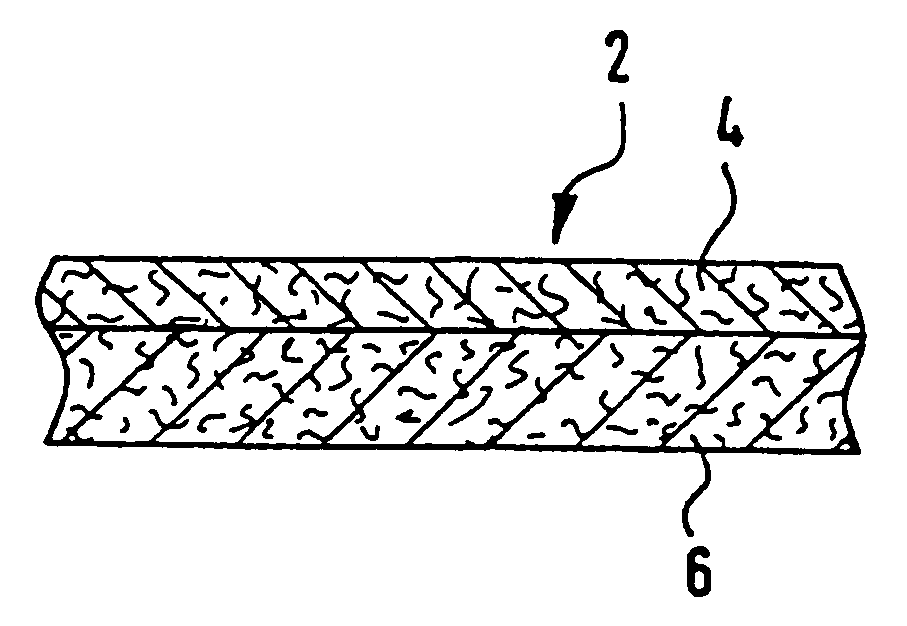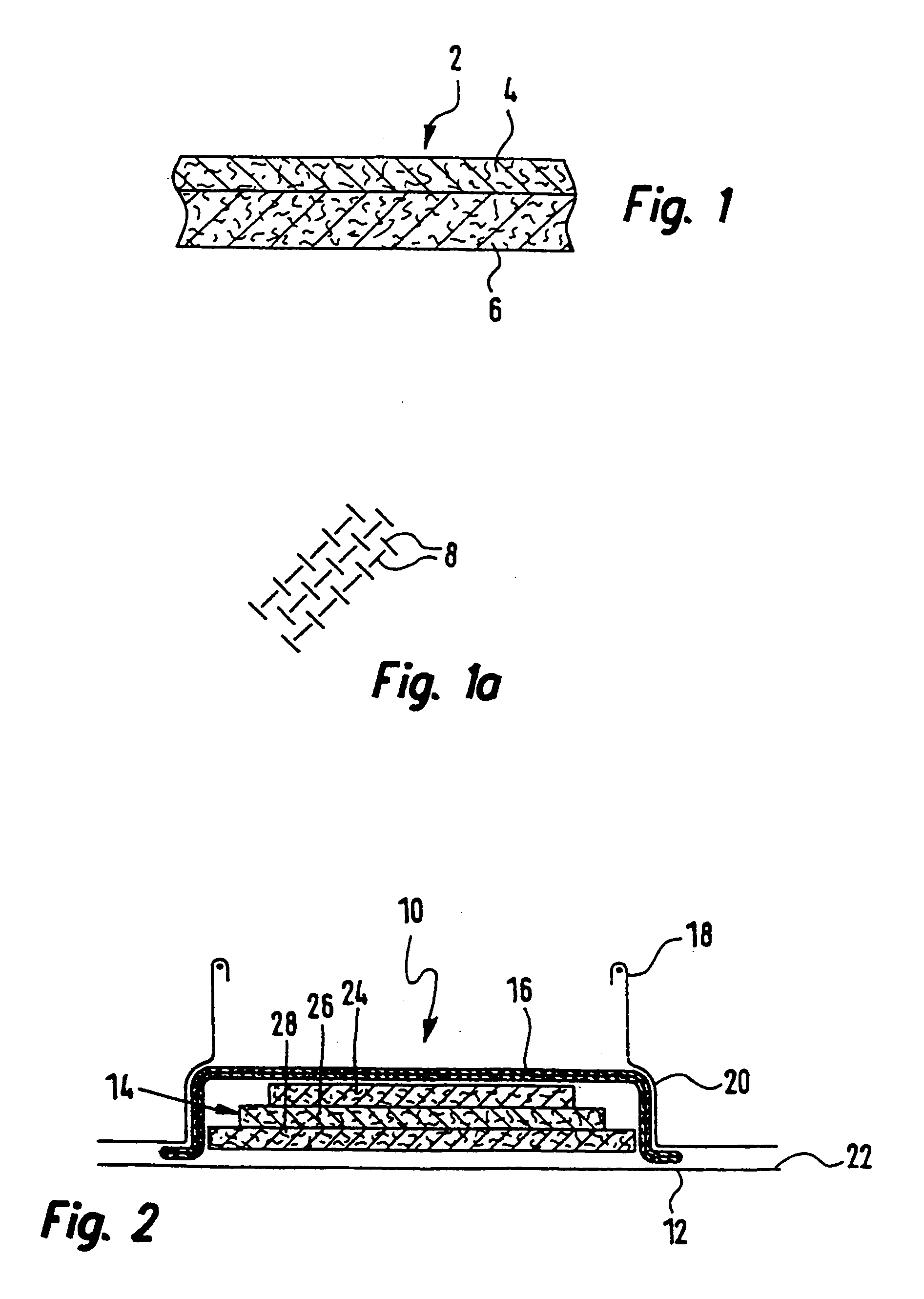Composite material for producing a layer of hygienic article that comes into physical contact with the body and a corresponding hygienic article
a technology of hygienic articles and composite materials, which is applied in the direction of bodily discharge devices, weaving, yarn, etc., can solve the problems of insufficient bonding between layers, difficult handling of composite materials on non-woven bases, and high dust levels when handled
- Summary
- Abstract
- Description
- Claims
- Application Information
AI Technical Summary
Benefits of technology
Problems solved by technology
Method used
Image
Examples
Embodiment Construction
[0034]FIG. 1 shows in a schematic representation a composite material under the invention which can be used as a layer in physical contact with the body in a hygienic article. The composite material 2 comprises a first upper layer 4 of the hygienic article in physical contact with the body in use and a second lower layer 6 of the hygienic article not in physical contact with the body in use. The upper layer 4, which has a surface weight of 18 g / m2, is formed of a carded non-woven material from a fiber mixture which is composed 60% by weight of polypropylene mono-component fibers with a denier of 2.2 dtex and 40% by weight of polypropylene / polyethylene bi-component fibers with a denier of 1.7 dtex. This layer was calendered, during which process a so-called “checkerboard textured pattern” was created, which has line sections 8 alternately offset to each other and aligned to each other in vertical directions as shown in FIG. 1a. The percentage of textured line sections 8 over the enti...
PUM
| Property | Measurement | Unit |
|---|---|---|
| Fraction | aaaaa | aaaaa |
| Fraction | aaaaa | aaaaa |
| Fraction | aaaaa | aaaaa |
Abstract
Description
Claims
Application Information
 Login to View More
Login to View More - R&D
- Intellectual Property
- Life Sciences
- Materials
- Tech Scout
- Unparalleled Data Quality
- Higher Quality Content
- 60% Fewer Hallucinations
Browse by: Latest US Patents, China's latest patents, Technical Efficacy Thesaurus, Application Domain, Technology Topic, Popular Technical Reports.
© 2025 PatSnap. All rights reserved.Legal|Privacy policy|Modern Slavery Act Transparency Statement|Sitemap|About US| Contact US: help@patsnap.com


